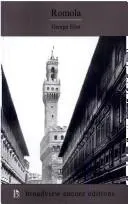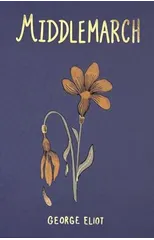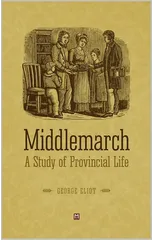The most exotic of George Eliot’s works, Romola recounts the story of the famous religious leader Savonarola in Florence at the time of Machiavelli and the Medicis. Of all her novels, this was the author’s favourite. No other Eliot novel was illustrated in its first edition. Romola, however, was sought by George Smith for serialization in the prestigious illustrated Cornhill Magazine. Smith commissioned illustrations for the novel from the rising young artist Frederick Leighton, who had studied in Florence in the 1840s and had frequently painted Florentine Renaissance subjects. Romola was serialised with the Leighton illustrations in the magazine from July 1862 to August 1863. It was first published in book form in 1863; the first edition was published by Smith, Elder in three volumes, and a one-volume edition in two-column format with all but one of the Leighton illustrations was published later that year by Harper & Brothers in the United States. This facsimile reprint is of the one-volume 1863 Harper & Brothers edition, and includes 8 pages of original advertisements from the back of the book. This is one of a series from Broadview Press of facsimile reprint editions—editions that provide readers with a direct sense of these works as the Victorians themselves experienced them.
George Eliot
George Eliot was the pen name of Mary Ann Evans, a prominent Victorian-era novelist known for her insightful and complex characterizations. Her most notable works include "Middlemarch," considered one of the greatest novels in the English language, and "Silas Marner," a poignant tale of redemption and community. Eliot's literary style is characterized by its psychological depth, moral complexity, and social commentary. She was a pioneer in the realist tradition, exploring themes of morality, religion, and human relationships in her writing. Eliot's contributions to literature include challenging traditional gender roles and societal norms, as well as expanding the scope and depth of the novel as an art form. Her work continues to be celebrated for its profound insights into the human condition and its enduring relevance in contemporary society.






